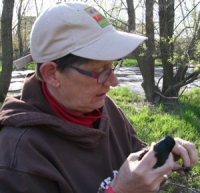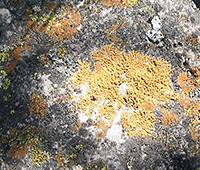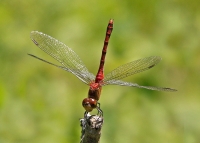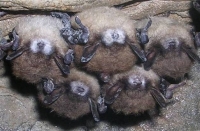
Anne Reis
Anne has conducted research on a variety of topics including cranberries, potatoes, wetlands, lichens, tamaracks, and most recently bats. She has a B.S. and M.S. in Horticulture from UW-Madison and a M.S. in Biological Sciences and a GIS Certificate from UW-Milwaukee. Anne is the GIS Specialist at the Center and enjoys reading, mapping, gardening, and spending time outside with her husband and daughter in the Riverwest neighborhood.
Darwin, Franklin and You
What do Charles Darwin, Benjamin Franklin and our summer interns have in common? They are CommunityScientists! A Community Scientist is someone who engages in the research process in a non-academic setting. People are often surprised to learn that anyone can participate in our research projects, regardless of their age, background or previous experience. All you need is a passion for the natural environment. Community Science volunteers at the Center work with bats, birds, bugs, frogs and toads, small mammals, snakes, turtles, insects, plants and more!
Research & Citizen Science Highlight: Lichens!
Lichens are the ultimate example of collaboration in the natural world. If you're not familiar with this group of organisms, perhaps this joke will clue you in: Why did the fungus and the algae get married? Answer: They took a lichen to each other! If you've heard this joke before, you're probably groaning and rolling your eyes. If you haven't, I hope you're intrigued.
How to Get Involved in Dragonfly and Damselfly Research at the Center
What other group of animals besides birds can you identify through binoculars, take colorful photographs of during the summer and track their migration in the spring? If you answered dragonflies and damselflies, you would be correct! Wisconsin is home to over 160 species of dragon and damselfies and summer is the time to monitor for these fast-winged, brilliantly- colored invertebrates. This year, two of the Center's Advanced Outdoor Leaders, Ethan Bott and Humzah Abdullah, will be leading the Odonata (the scientific group name for dragonflies and damselflies) Surveys with the help of volunteers from the Wisconsin Odonata Survey and the Wisconsin Dragonfly Society. Ethan and Humzah recently attended an Odonata workshop at UW-Waukesha led by experts from across the state. The following narrative is Humzah's summary of the workshop:
White-nose Syndrome Surveillance in Wisconsin
Wisconsin’s hibernating bat species (cave bats) are in danger of contracting a devastating disease called white-nose syndrome (WNS). This disease, caused by the fungus Geomyces destructans, has decimated populations of cave bats in the Northeast, Mid-Atlantic and Southeast US. Over six million bats have died since the initial detection in New York in 2006, and the disease has spread to 22 states and 5 Canadian provinces.
Copyright © 2023 The Urban Ecology Center






